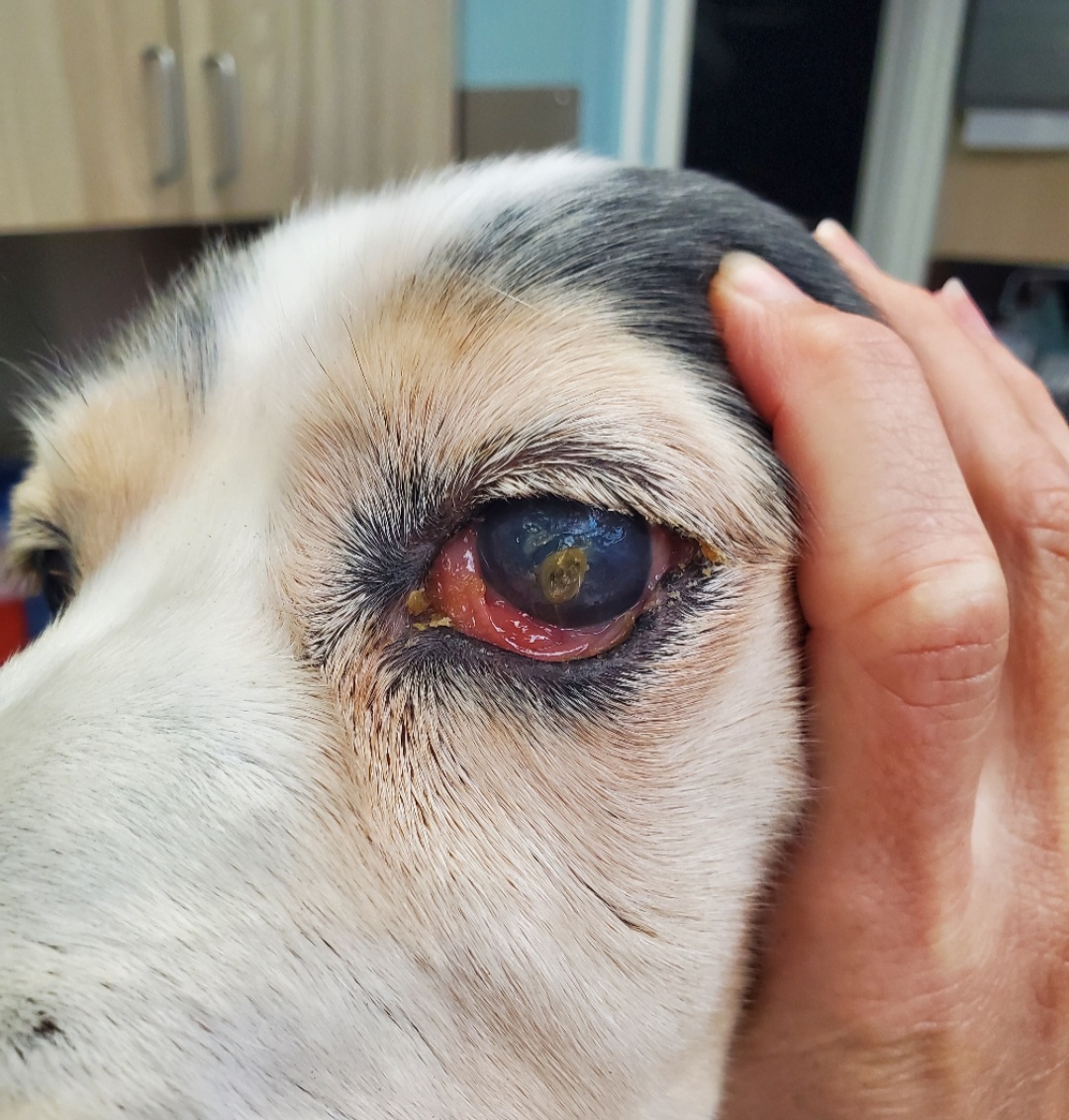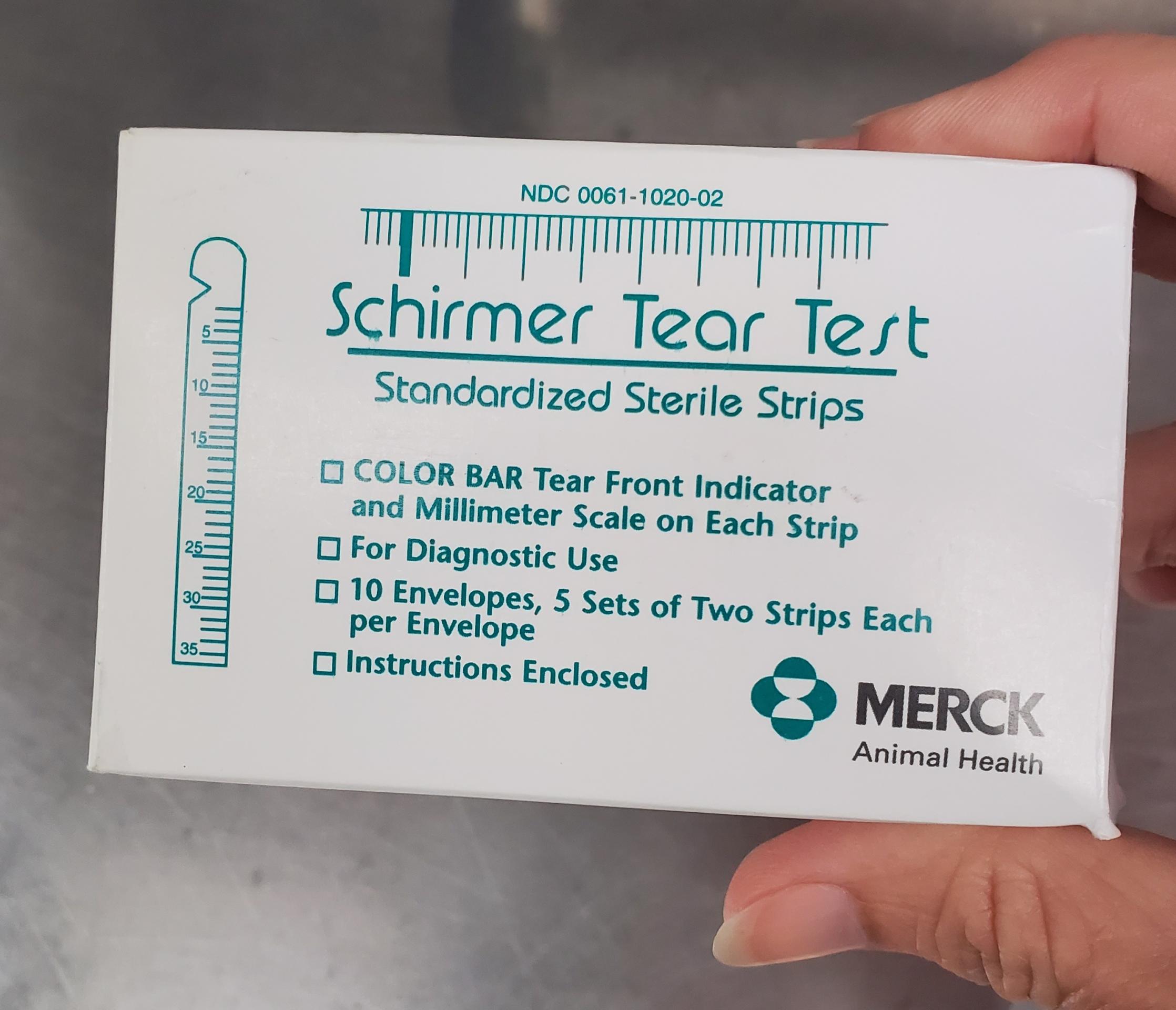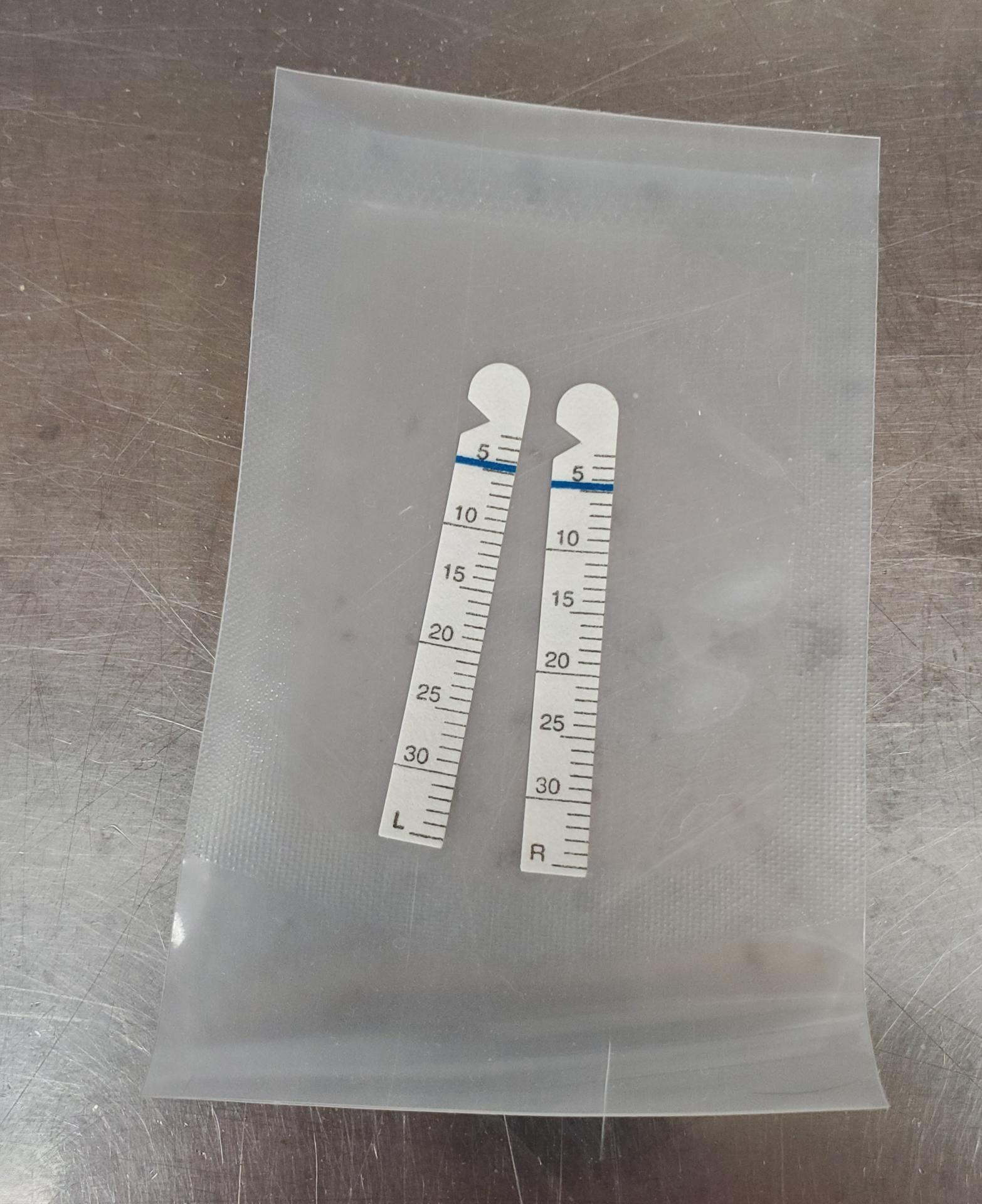The Patient
Leo, an 11 year old male neutered spaniel mix, came to see me after his owner noticed that his left eye was having discharge and was very red. The symptoms had been going on for several months and the owner had been trying to fix the problem by using eye wash and a leftover topical antibiotic ointment.

The Case
On examination, Leo's left eye had moderate dry greenish ocular discharge that was sticking to the cornea. The sclera (white of the eye) was very red with visible vessels. The third eyelid (membrane at the inside corner of eye) and the conjunctiva (lining of the eye) were very swollen, red, and dry in appearance. The cornea (outside layer of the eye) was what we call "lackluster" meaning there is no shine or moisture to the eye. The right eye looked fairly normal but was showing early signs of dryness too. I recommended a test called a Schirmer Tear Test (STT) as well as a check of the intraocular pressure (IOP) to rule out glaucoma. The STT is an easy way to measure tear production in the eye. It consists of putting a little strip of white paper against the cornea and closing the lids of the eye for 1 minute to see how many tears are produced in millimeters. The irritation of the tiny bit of paper should stimulate the eye to tear. In normal dogs, they should make >20mm/min of tears. Leo made 0mm in the left eye and 10mm in the right eye. I then flushed the eyes to remove all the discharge, applied a numbing drop, and used a Tonopen to measure the IOP in both eyes. This was normal. I diagnosed Leo with a disease called keratoconjunctivitis sicca (KCS), also known as "dry eye". KCS occurs when the tear glands located below the lower eyelid and within the 3rd eyelid in dogs stop making tears typically related to an autoimmune attack on the glands. This means that the body's immune system targets the gland so that it cannot function properly. Less commonly, there is a problem with the nerve that innervates the tear gland to function.


The Treatment Plan
In Leo's case, I started him on a prescription medication called Tacrolimus which suppresses the immune attack on the tear glands. I also sent home an artificial tear ointment to help lubricate the eye structures until the body can make more tears on its own. I showed the owner how to clean the eye to remove all debris with sterile eye wash and cotton.
The Outcome
I rechecked Leo's eye about 2 weeks later and he was doing much better. The redness and swelling were resolving and the eyes were much more comfortable. Most dogs require longterm treatment for dry eye and these dogs are more prone to corneal ulcerations due to an unhealthy cornea and/or tear film. Tears are very important to the health of the eye for dogs and for people. If your dog's eye looks abnormal or they are squinting or pawing at their eye, they need to be seen by their veterinarian right away.
The Drake Center for Veterinary Care is an AAHA-accredited animal hospital located in Encinitas, CA. The Drake Center loves being a source of information for all pet owners across the country however if you have any questions regarding pet care and do not live in Encinitas, CA or surrounding cities, we encourage you to contact your local veterinarian.
If you have questions and you'd like to reach out to us, you can call us directly at (760) 452-3190, or you can email us at [email protected]. Don't forget to follow us on social media Facebook, Instagram.
